Fred Branfman on Tom Brokaw’s ‘Boom!’
What kind of look back to the '60s manages to almost entirely ignore or miss the point of the Vietnam War?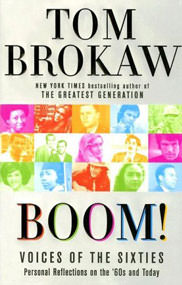
“I committed the same kinds of atrocities as thousands of others in that I shot in free-fire zones, fired .50-caliber machine bullets, used harass-and-interdiction fire, joined in search-and-destroy missions, and burned villages. All of these acts are contrary to the laws of the Geneva Convention, and all were ordered as written, established policies from the top down, and the men who ordered this are war criminals.”
— John Kerry, on “Meet the Press,” April 1971
Tom Brokaw’s best-selling book, “Boom! Voices of the Sixties — Personal Reflections on the ’60s and Today,” bills itself as “a virtual reunion of a cross section of the Sixties crowd, in an effort to discover what we might learn from each other, forty years later.” Its 688 pages consist mainly of interviews with more than 80, mostly successful, veterans of the ’60s, dealing with Vietnam, the civil rights and women’s movements, and electoral politics. Other than Vietnam, his material is relatively unobjectionable, since America has made some progress — though not as much as he suggests — in the domestic arena. The personal stories of women leaders and courageous African-Americans, who rose to prominence from the trenches of the burgeoning women’s movement and from the barricades of the civil rights movement, are inspiring.
But one reads the Vietnam War sections of Brokaw’s book with a growing sense of amazement, disbelief and, ultimately, profound sadness. For Brokaw has, incredibly, managed to compile a lengthy book about the 1960s that barely mentions the central event which created and shaped it. A reader of “Boom!” would have no idea that U.S. leaders pursued a war that killed enormous numbers of Indochinese civilians and that this mass murder was the single most important factor prompting the various domestic convulsions we now call “The ’60s.”
Given Brokaw’s many years as one of network television’s main news anchors, and that his views so often reflect conventional wisdom, this omission raises troubling questions: Is it really possible for America to have killed hundreds of thousands of Indochinese peasants and still, 30 years later, act as if it never happened? Has Brokaw really so sabotaged his own heartfelt call to unite America by ignoring what we learned from South Africa: that true national reconciliation can occur only if hard truths are acknowledged, responsibility taken and amends made?
Is our Indochina history really to remain a nightmare from which we will never awaken?
Partly as a result of America’s continuing refusal to fully confront the history and legacy of its involvement in Indochina, U.S. leaders have been permitted to commit many of the same mistakes and war crimes in Iraq as they did in Vietnam. Historical analogy is, of course, debatable. But such parallels as the media buying George W. Bush’s lies about weapons of mass destruction just as it did Lyndon B. Johnson’s deceptions about the Gulf of Tonkin incident, and the ways in which the U.S. has been weakened in Iraq just as it was in Indochina, are too important to be ignored.
Brokaw’s book provides a mirror reflecting the many ways America continues to live in a web of denial and deception. The key event of the 1960s was not “the Vietnam war” as Brokaw describes it — a conventional war between opposing armies — but U.S. leaders’ approval of policies that led to the mass murder of civilians. Such “collateral damage” was inherent in fighting against a native population sheltering a guerrilla force seeking to expel a foreign invader. It is a fact that Washington — whatever its declared intent or rhetorical conceits — pursued a strategy and tactics that led to the killing of tremendous numbers of Indochinese civilians, and wounded and made homeless more than 10 million people, by dropping 6.7 million tons of bombs (and firing as much ground ordnance from Army bases and giant Navy ships) on tiny Indochina, more than triple the World War II bombing of all Europe and the Pacific theater. Former U.S. Defense Secretary Robert S. McNamara, a principal architect of the Vietnam War, has estimated that 3.4 million Vietnamese died in the war. A sizable number of these were civilians, as were a very large number of Laotian and Cambodian peasants who died from years of U.S. bombing of their towns and villages.
It is also a fact that this bombing and shelling resulted in the “wanton destruction of towns and villages,” “deportations” and “inhuman acts committed against any civilian population,” acts which were included in the indictment of Nazi leaders at Nuremberg, and clearly violated the laws of war meant to protect civilians. It is difficult to see how U.S. leaders would not have been similarly indicted had the Nuremberg judgment been applied to their conduct of the war.
Interviewing more than 1,000 refugees from U.S. bombing in Laos in 1969-70, I was horrified to learn of grandmothers burned alive by U.S.-manufactured napalm, and children who had suffered the most painful deaths possible as U.S. antipersonnel bomb pellets shredded their small bodies. I learned of whole families slowly suffocating to death from American 500-pound and 1,000-pound bombs. I saw tens of thousands of innocent rice farmers turned into miserable refugees — as U.S. bombers systematically destroyed their towns and villages and U.S.-supported forces deported them from the villages of their birth. The bombing mainly killed and wounded villagers, since the soldiers could survive in the forest. I was driven to near-desperation by realizing that carloads of more innocents were being murdered daily through similar U.S. bombing over vast areas of Laos, Cambodia and Vietnam inhabited by millions of people. These policies were deliberate and were designed to terrorize a population into submission and capitulation.
The U.S. Senate Subcommittee on Refugees has estimated that more than 12 million Indochinese civilians were wounded or made homeless during the war, and that more than 600,000 civilians were killed. Other credible sources put the number of murdered civilians at two to three times that number. The vast majority of civilian casualties were inarguably caused by U.S. firepower.It is also true of course that the war in Indochina included sizable military combat between armies. But one cannot seriously explore the ’60s while ignoring the single most important factor that produced its social convulsions:
America’s murder of Indochinese civilians caused millions of idealistic young people to protest, at first decorously, and then with mounting fury and deepening despair as their protests were ignored and the killing increased — day by day, month by month, year by year, for more than a decade. “Hey hey LBJ, how many kids did you kill today?” was not merely a slogan chanted by draft dodgers. It was a cry from the heart from millions of decent people — of whom those of draft age were but a small minority — who could not bear that their government was engaged in such wholesale slaughter of innocents, and that it was doing so in their name.
The undeclared and illegal war created massive resistance to the draft as those subject to it, horrified by the killing, objected to being forced to fight a war in which they did not believe and for ends they did not approve.
The war turned children against parents, a massive “inter-generation gap” as idealistic young people felt betrayed by, and then rebelled against, the elders of “the greatest generation,” whom they had grown up believing in; sought to create alternative institutions; and ultimately failed because they were too angry, young, psychologically unaware, inexperienced, confused and undone by the drugs they had partly embraced to kill their pain.
The war ripped a generation apart from within, as many who believed in their elders and government, and either fought in Vietnam and/or joined conservative movements at home, were infuriated that their courage, sacrifice, morality and belief in nation were denigrated by the protesters.
The war tore apart the entire nation as a “Silent Majority” of Americans — men and women much like Brokaw himself — with “other priorities” than actively opposing the war in Vietnam, became furious at being regarded as immoral by people whom they saw as arrogant, self-righteous, filthy, narcissistic, anti-American and violent.
How Brokaw could write an entire book devoted to the ’60s and ignore what was most toxic about the country’s aggression against Vietnam and the many ways our involvement in Indochina more generally deformed and shaped our political culture — not to mention Vietnam’s — is bewildering, to say the least.
Since Brokaw’s book consists mainly of more than 80 interviews with veterans of the ’60s, his biases are primarily revealed through his choice of interviewees. Democratic Party activist and businessman Sam Brown is cited twice in the book, but a seminal ’60s figure like Tom Hayden is ignored. Sen. James Webb’s portrayal of the war as solely a military battle, and of antiwar protesters as cowardly and unpatriotic, receives five or six times as much space as anyone else interviewed. The experiences of brave anti-draft leaders like David Harris, who went to jail out of moral opposition to the war, and courageous people like former volunteer chief Don Luce, who risked his life for years to bring civilian suffering to public attention — including exposing the “tiger cages” and other torture of tens of thousands of political prisoners — are not included.
Veterans like Colin Powell, Bob Kerrey, Wayne Downing and John McCain, who do not mention U.S. murder of civilians, are interviewed at length. The views of equally well-known veterans who bravely exposed and opposed the murder — like John Kerry, Bobby Muller (whose organization won a Nobel Prize for the land mines treaty) and Ron Kovic (author of “Born on the Fourth of July”) — are written out of Brokaw’s history. Les Gelb, a former Department of Defense official who worked on the Pentagon Papers but kept silent, is interviewed. But Daniel Ellsberg, the former government official who bravely copied the papers and leaked them to the press, is not even mentioned, much less interviewed. War opponents like George McGovern, Gary Hart and Bill Clinton are only quoted about the war’s aftermath — not the crimes that led them to oppose it.
Brokaw peppers his book with disparaging comments about the leftist “extremists” who did not play by the rules. Many of his criticisms are justified, particularly the way in which radicals made themselves rather than the war the issue. But it is hardly justifiable to only criticize the extremism while ignoring the far more objectionable — and criminal — behavior by U.S. leaders that produced it.
One wishes that Brokaw had seen fit to interview John Kerry about his charge made nearly 40 years ago that U.S. leaders were war criminals. For it is this issue that goes to the heart of what triggered the upheavals of the ’60s. If a hero like Kerry had the courage to tell the truth in 1971, jeopardizing his political career and potentially angering millions of Americans and fellow vets, why is Tom Brokaw so afraid to even raise the issue today? It is said that journalism is a rough draft of history. Alas, Brokaw’s disappointing book is neither good reporting nor trustworthy history.
Fred Branfman, the editor of “Voices From the Plain of Jars: Life Under an Air War” (Harper & Row, 1972), exposed the U.S. secret air war in Laos while living there from 1967 to 1971 and went on to develop solar, educational and Information Age initiatives for California Gov. Jerry Brown and national policymakers.
Your support matters…Independent journalism is under threat and overshadowed by heavily funded mainstream media.
You can help level the playing field. Become a member.
Your tax-deductible contribution keeps us digging beneath the headlines to give you thought-provoking, investigative reporting and analysis that unearths what's really happening- without compromise.
Give today to support our courageous, independent journalists.

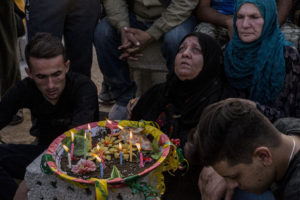
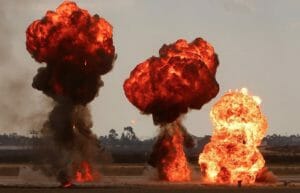
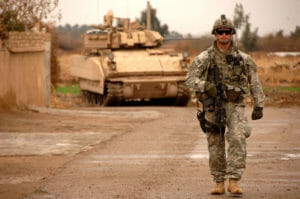
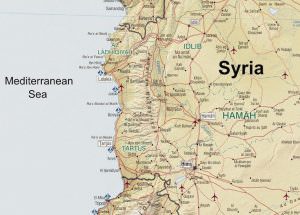
You need to be a supporter to comment.
There are currently no responses to this article.
Be the first to respond.